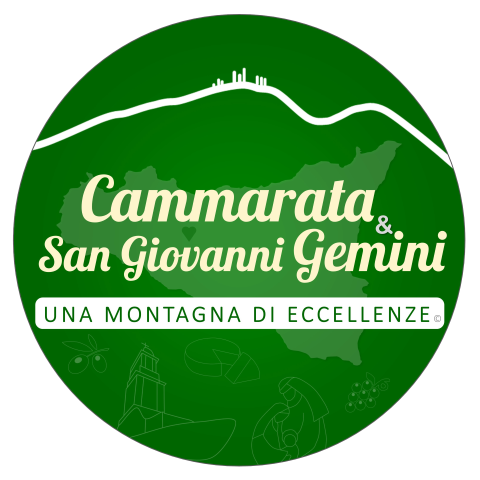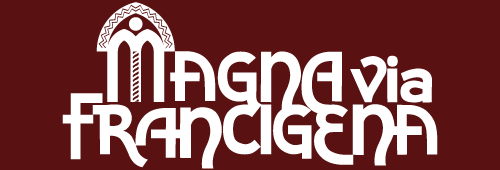
How it looks
The church of S. Sebastiano should be very old. It is dedicated to the Madonna of Itria, the Odigitria, the guide of the journey, venerated by the Orientals before. In 1985 during the restoration works, the foundations of an earlier building were found. They consisted of large boulders, roughly squared, with a transversal direction compared to today's church. Are they perhaps remains of an ancient Byzantine church that stood in the primitive nucleus of the town?
Open only on various occasions, it is located in Via Arturo Alessi, 6 Cammarata

San Sebastiano Church
Cammarata

History
Thanks to a great man who left us a great testimony of the history of Cammarata, we took the text from the book "Cammarata news on the territory and its history" by Monsignor Domenico De Gregorio .
The cult of S. Sebastiano will have been introduced there towards the end of the century. XV and the beginning of the following, because the benefit of S. Sebastiano was founded there with an act dated 7-10-1532 in nr. Federico Blanco di Cammarata and perhaps since then the church began to be called with the name of the saint. The benefit was under the patronage of the University. In the church there was the ancient brotherhood of the Madonna dell'Itria (in 1598 Antonio, son of Luca Traina left her, in nr. Pietro Cimino, onza one) which had to die out towards the century. XVIII. In the visit of 1540 the church of S. Sebastiano is remembered with these words: "Ecclesia di Santo Sebastiano in company terra de jure patronatus of li jurati di company terra". He had an income of one onza annus. In an act dated 11/26/54 a house is mentioned "sita et posita in hac terra Camerate et in contrata Platee publice seu di lo floor of the fountain ipsius terre, secus locum et ecclesiam S. Sebastiani dicte terre" (31). In a period of plague, perhaps at the end of the 1500s or at the beginning of the 1900s, the church was also dedicated to S. Rocco for having him protector in the epidemics so frequent at that time. In a document cited by Biancorosso the church is described as follows: "The aforementioned church of the glorious martyr S. Sebastiano and S. Rocco, where the congregation of the Soul of Purga torio of the aforementioned land is also aggregated, and in the main square of the same , in front of the main door of said church, there is a floor with a water fountain in the middle with its degrees of carving, in the middle of which there is a column with a small bridge, above it a pedestal with a statue of giroglifico marble representing solerata in different bodies giroglifico marble representing Cammarata, on the right side there is a solerata house in different bodies above which the annual fees are made to said congregation that go down to the sum of onza 1 to grain 13, on the left side there is the loggia of the university of that land where the pawns that are currently destroyed are released and banished; the facade of said church is of stucco, the main door is of carving and masterful with a la pide on the door, where you can read the dedication and the year of rebuilding in better shape with the image of the glorious St. Sebastian, with the arms of Duke Francesco Branciforti "(32).
On the plaque we read these words: "Virgini Deiparae divi sque Sebastiano et Rocho aedem sacram vetustate pene collapsam renovata a fundamentis substructione Beneficiarius (33) in melio rem hanc faciem, sua et piorum civium pecunia restendam cu ravit. Year MDCXXXIII.
On the sides of the plaque are the words: Francisco duce et au spice = Under the auspices of Duke Francesco (Branciforti). The church was used for the assemblies of the civic council of the town which at the touch of its bell gathered in it to deliberate. Decisions and notices were promulgated from a small loggia to the left of the façade.
San Sebastiano was the seat of the civic council until the end of the feudal period; later, the decurions met either in the town hall or in another house. During the events of 1848 and 1860 the meetings were held in matrix.
In 1838 the incomes of the church were 19,34,12 onze. On 2-7-1860 he succeeded in the benefit of the sac. DV Pacera, the sac. Gaetano Longo. On January 20, 1863, with a special ordinance, the mayor communicated to the rectors of the Congregation and to the beneficiary the order to tear down the roof and the vault of the church because they were unsafe. The sac. Gaetano Longo and the rectors of the Congregation managed to redo the vault within the year.
In 1905, the year he died. Emanuele Spinelli, brother of the vi carlo Giosue, left with a testament dated 31-12-1884 at nr. S. You. liareni, L S00 to pave the church in marble.
In 1872 Fr Giacinto Biancorosso was chaplain and beneficiary; Later it was d. Giosué Spinelli.
In 1904 riots occurred in the sacristy, which the carabinieri also dealt with, but we have no other news.
In 1915 various appeals were forwarded to the bishop and the Pope because several sacred objects had disappeared from the church, including a precious veil.
Mons. Lagumina on 19-3-1915 wrote to Archpriest Gueli: "It has been written that I, in agreement with you, have closed the church of San Sebastiano, which I try to bring about the collapse of the association of Purga torio by not electing either lay rectors, nor the ecclesiastical rector, the current rector having become powerless (G. Spinelli) ".
At that time, the church had a total income of administrator the sac. N. Giacchino who was accused to the bishop of sending out the diocese the masses to be celebrated minor. At the beginning of 1915 the church, perhaps due to Spinelli's illnesses, had been closed, but in April it had already reopened. After the fire of S. Domenico, many statues were brought to the San Sebastian which, in 1950, also functioned as a matrix, carrying out works in San Domenico and in Matrice. But in 1936-37 it had been closed to worship to give a seat to the Female Catholic Action. After the Second World War it was restored especially for the interest of Mr. Giuseppe Bellavia and reopened for worship. In the church the statues of San Sebastiano and S. Rocco (ruined by restorations) and of the Madonna delle Scalilla, the painting of Purgatory, of S. Gregorio and of the Madonna Dell'Itria of the century are remarkable, also artistically. XVIII. The Purgatory Chapel is decorated with good stuccos, frescoes and paintings.
Back to the culture section
Go ahead


Sections of Magna via Francigena
For fans of the "Magna Via Francigena" it is an opportunity not to be missed by discovering the area on foot, discover the dedicated page ...





